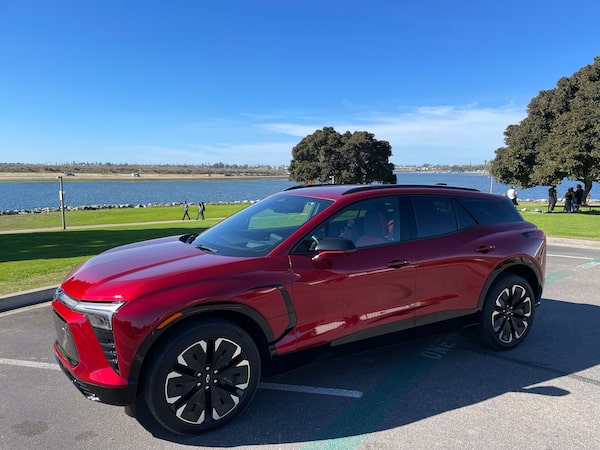
The 2024 Chevrolet Blazer EV comes with either a 85- or 102-kilowatt-hour battery.Petrina Gentile/The Globe and Mail
Despite a competitive field of mid-size electric SUVs with established leaders such as the Tesla Model Y and Hyundai Ioniq 5, Chevrolet officials are hoping design and experience will set the new 2024 Blazer EV apart from the pack.
“One advantage Chevrolet has is their rich and storied motorsport-inspired history,” said Justin Salmon, a senior designer at Chevrolet, ahead of the test drive in Southern California. “That history resonates with customers. There’s so much to pull from and so many products that have inspired customers over the years. There’s an opportunity to nod to that and create something that evokes the same feeling.”
In Canada, the Blazer EV, which will start at just under $60,000, will be available in many options - three trim levels (LT, RS, SS), three drivetrains (front-, rear-, and all-wheel drive), and two battery sizes (85 and 102 kilowatt-hours). The mid-level RS RWD and AWD trims were available to drive. The RWD test was short and sweet, less than 30 minutes. The AWD was a full-day route that spanned 267 kilometres from the beaches of Del Mar, Calif. to the top of Mount Laguna with pitstops for lunch and holiday shopping.
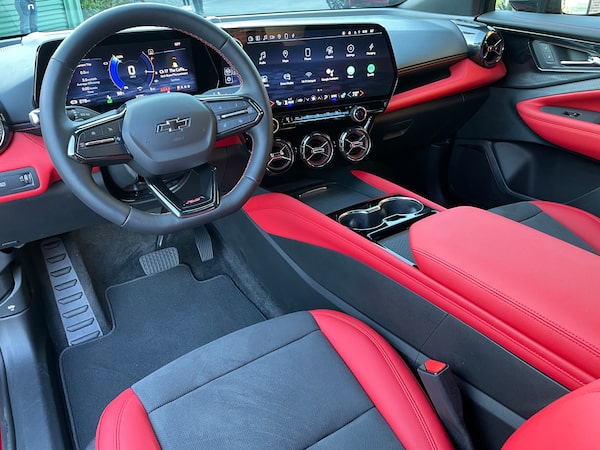
The 2024 Chevrolet Blazer EV has a 17.7-inch infotainment touchscreen and an 11-inch driver information screen.Petrina Gentile/The Globe and Mail
Walk up to the EV and a cool choreographed LED front lighting sequence comes to life, greeting the driver on approach and departure. Step inside, and there’s no push button to turn the vehicle on or off. Just sit in the driver’s seat and the seat pressure along with the key fob sensor brings everything to life.
The RS AWD, which has the 85-kilowatt-hour battery pack and an estimated 449 kilometres of range, delivers 288 horsepower and 333 lb-ft of torque. The RS RWD model, which we drove briefly, has 340 horsepower and 325 lb-ft of torque and the larger 102-kilowatt-hour battery pack has up to 521 kilometres of range. The top SS model is the most powerful version with dual motors; it makes 557 horsepower and 648 lb-ft of torque and can hit 96 kilometres per an in less than four seconds. That model wasn’t available to drive.
Along the sweeping mountain roads, the Blazer felt well-planted and hugged the roads well, owing to its low centre of gravity. Off the line, the RS AWD trim wasn’t the fastest out of the gate, but it was competent, smooth and comfortable. The one-pedal driving allowed the vehicle to slow or come to a complete stop using only the accelerator pedal, but I wasn’t a fan. It felt too abrupt and jarring. What was impressive was the range at the end of our route. We started the day with 449 kilometres of range and 99-per-cent battery charge displayed on the driver’s screen. And we ended the route with 182 kilometres of range left, meaning the range was accurate to the driving distance covered, even with the air conditioner, radio, and highway speeds. Regenerative braking, which captures lost energy and stores it into the battery, helped maximize the range. Over all, both trims were easy to drive and easy to use.
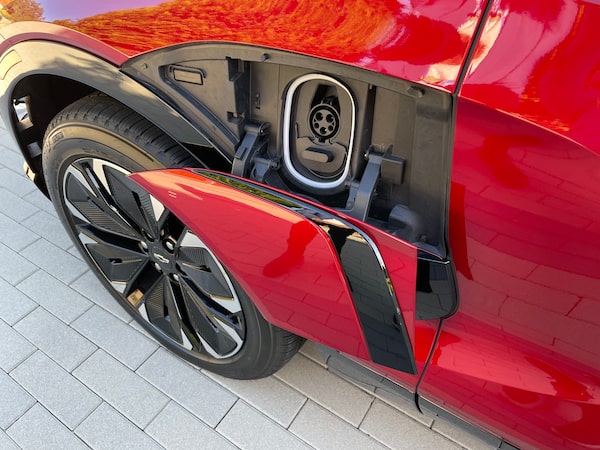
The charging port for is integrated into the design.Petrina Gentile/The Globe and Mail
The Blazer EV has GM’s new Ultium battery platform. The flexible battery architecture costs less, is more powerful and uses less cobalt than the current batteries in the Chevrolet Bolt. And the battery technology, which will be in every GM EV moving forward, undergoes vigorous cold-weather testing in Canada at GM’s facility in Kapuskasing, Ont.
Inside, modern tech touches include a standard 17.7-inch infotainment touchscreen, an 11-inch driver information centre, and Google Built-In. Chevrolet dumped Apple CarPlay and Android Auto capability features in the Blazer and replaced them with Google Built-in, including Google maps and Google Assistant. Mikhael Farah, Chevrolet’s communications director in the U.S., says Google works better with the Blazer, allowing it to plan routes on maps, identify charging stations on your trip and precondition the battery before charging.
“There’s a lot more integration with the vehicle that we have with the new system versus what the phone can provide. Additionally, if your phone starts to die or your phone is older with an older IOS and it starts to slow down, that impacts your experience. Whereas this [Google Built-In] is an updatable, configurable system – it gets better over time,” he said.
Google Built-In is free for three years; afterward a monthly or annual subscription fee will apply. No word, yet, on the cost.
The 2024 Chevrolet Blazer EV 2LT AWD model starts at $59,999, before federal and provincial rebates, where available. The RS AWD and RWD start at $69,999.
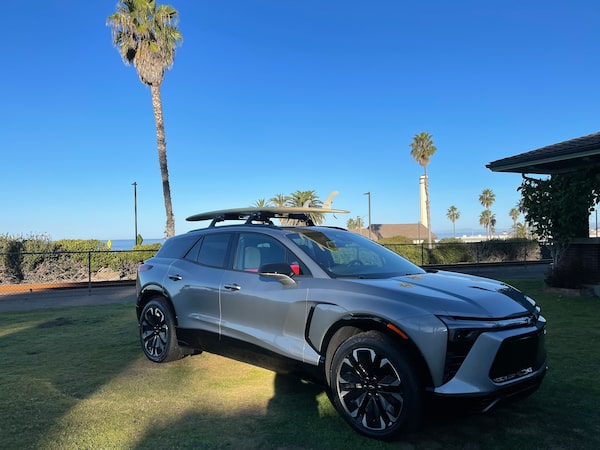
The 2024 Chevrolet Blazer EV comes with three trim levels options, three drivetrains and two battery sizes.Petrina Gentile/The Globe and Mail
Tech specs
2024 Chevrolet Blazer EV
- Base price/as tested: $59,999 / $69,999 (plus $3,299 freight, dealer fee and air conditioning tax)
- Motors: single-motor or dual-motor
- Battery capacity: 85 or 102 kilowatt-hours
- Horsepower/torque: RS RWD – 340 / 325 lb-ft; RS AWD – 288 / 333 lb-ft
- Drive: front-, rear- or all-wheel drive
- Claimed Range: up to 521 kilometres on RS RWD base model; up to 449 kilometres on RS AWD
- Alternatives: Tesla Model Y, Polestar 2, Hyundai Ioniq 5, Ford Mustang Mach-E, Volvo XC40 Recharge, Volkswagen ID.4
Looks
A striking, sleek design that’s more vibrant than its gas-powered sibling. It’s also longer, wider and lower to the ground than the conventional Blazer. The driver’s charging port is integrated beautifully into the design of the vehicle. And no gimmicky door handles – traditional door handles are a welcome sight. Stunning red colour with contrasting black accents are attractive.
Interior
Very spacious and comfortable. With no transmission tunnel, a flat floor adds extra legroom and comfort for rear-seat passengers. A large, diagonal 17.7-inch infotainment touchscreen is tilted toward the driver for easy access and better visibility. It is nice to see physical buttons and dials for climate control along with modern touches including a hands-free start-stop system.
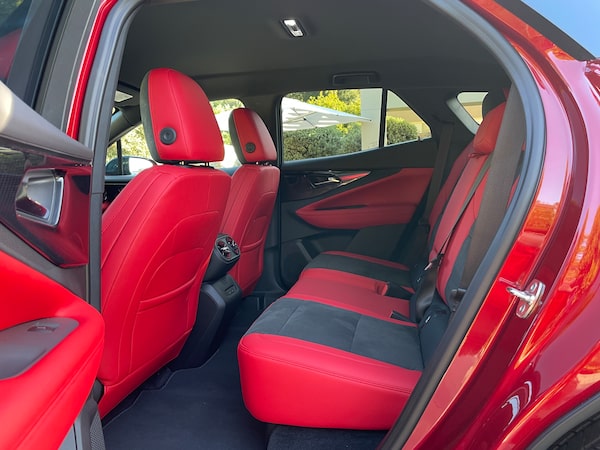
With a flat floor, the back seats of the 2024 Chevrolet Blazer EV have extra legroom and comfort for rear-seat passengers.Petrina Gentile/The Globe and Mail
Performance
Both RS RWD and AWD models have pleasant road manners. The RWD model is more powerful and has more range, but I prefer the AWD model for its added security and stability for driving in the winter. An extra bonus - there’s no price premium to pay for AWD in the RS trim.
Technology
The Blazer EV is filled with safety features such as front automatic emergency braking with pedestrian detection, lane departure warning, lane keep assist, automatic high-beams and GM’s Super Cruise hands-free driving technology, which allows drivers to travel hands-free on more than 640,000 kilometres of compatible highways in the U.S. and Canada.
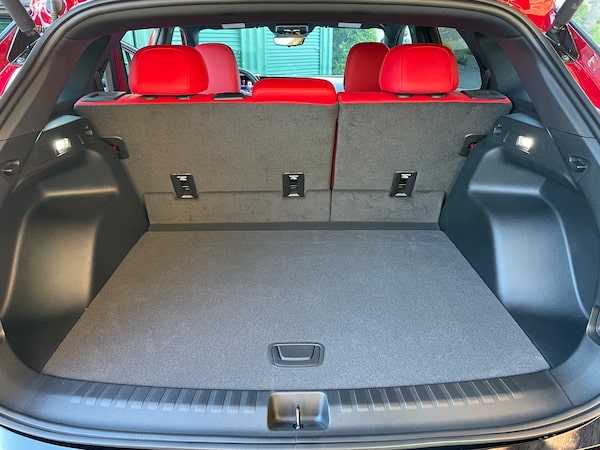
There is no frunk, but the Blazer's trunk has 1,693 litres of storage space.Petrina Gentile/The Globe and Mail
Cargo
Unlike many other EVs, there’s no front trunk. But the rear cargo space is large. With 1,693 litres of room, it can accommodate several suitcases and shopping bags. It also has a hidden compartment underneath for hiding valuables.
The verdict
Chevy’s latest EV is a nice package – it’s priced right, stylish and loaded with new technology that may give the competition a run for its money.
The writer was a guest of the automaker. Content was not subject to approval.
Shopping for a new car? Check out the new Globe Drive Build and Price Tool to see the latest discounts, rebates and rates on new cars, trucks and SUVs. Click here to get your price.